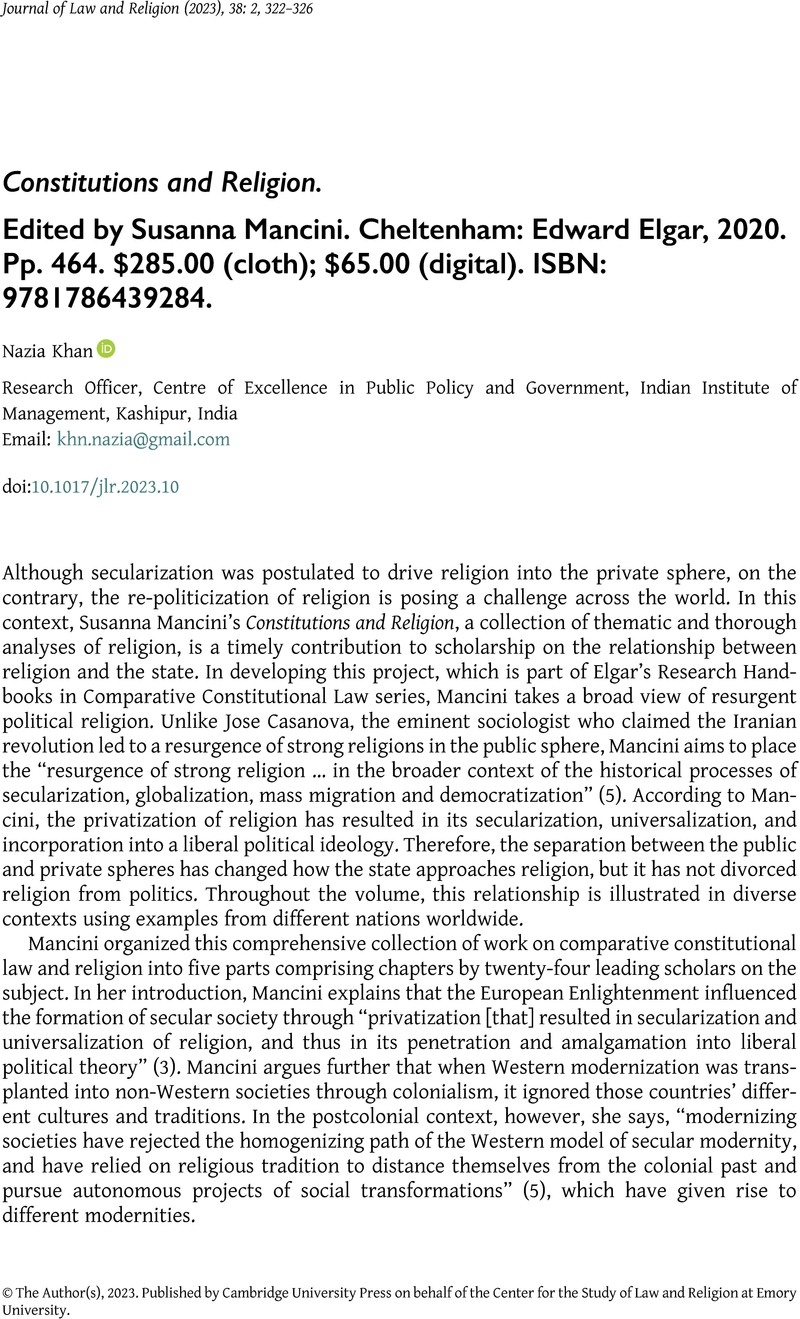No CrossRef data available.
Article contents
Constitutions and Religion. Edited by Susanna Mancini. Cheltenham: Edward Elgar, 2020. Pp. 464. $285.00 (cloth); $65.00 (digital). ISBN: 9781786439284.
Review products
Constitutions and Religion. Edited by Susanna Mancini. Cheltenham: Edward Elgar, 2020. Pp. 464. $285.00 (cloth); $65.00 (digital). ISBN: 9781786439284.
Published online by Cambridge University Press: 11 May 2023
Abstract
An abstract is not available for this content so a preview has been provided. Please use the Get access link above for information on how to access this content.

Information
- Type
- Book Review
- Information
- Copyright
- © The Author(s), 2023. Published by Cambridge University Press on behalf of the Center for the Study of Law and Religion at Emory University


